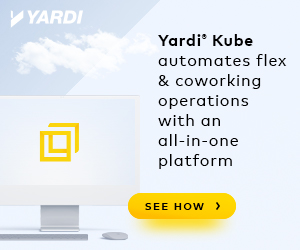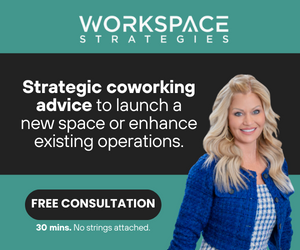- A recent Kellogg Insight article provides a fresh perspective on the high performer proximity effect in the workplace.
- New evidence suggests that employees seated within a 25-foot radius of a high performing colleague experience a surge in productivity (ranging from 3 to 16%), whilst the company stands to gain an impressive 15% increase in overall productivity.
- While this straightforward approach is appealing, employers must recognize the potential adverse consequences if the high performer is also a toxic colleague.
In school, teachers are very deliberate about where they seat students in the classroom, and often shift students around if the arrangements are causing distractions or other problems. It works for young kids, and it turns out seating arrangements have powerful impacts on how adults work, too. In fact, your office neighbor could be your secret to success — or failure.
The high performer proximity effect has scientific roots. Since the 1970s, Professor Thomas J. Allen, a noted figure in Organizational Studies at MIT Sloan School of Management, dedicated his research to investigating the impact of strategic seating arrangements on employee behavior and organizational success. His studies examined the communication patterns among closely situated employees, concluding that closer proximity significantly enhanced communication effectiveness. In the current context, researchers have revisited the benefits (and potential drawbacks) of assigned office seating — focusing on high-performing individuals and increased productivity within a 25-foot radius.
Does this Approach Really Work?
The people with whom we spend most of our time wield substantial influence over our development by shaping our habits, mindsets, and work ethic. Proximity to others often results in adopting and imitating their behavior, a phenomenon known as mirroring. Proximity to high-performing individuals can also instill qualities of drive and excellence merely by association. Even in elementary school, educators experiment with seating arrangements, strategically placing high achievers together.
The appeal of the proximity effect is its ability to yield positive outcomes in a relatively short time frame. Scientific data indicates that proximity can induce an immediate and measurable enhancement in performance. In professional settings, high performers often earn the title of “superstars.” Researchers scrutinized a 25-foot radius surrounding these superstars in a large technology company and discovered that colleagues within this vicinity experienced a remarkable 15% performance uptick, solely from proximity. Strategically arranging employee seating was found to improve both productivity and work quality.
This approach proves most effective when evaluating various aspects of employee performance, including productivity (task completion time), task effectiveness, and work quality — although this categorization is not exhaustive and may vary. It is also worth noting that employees adept in measurable aspects, such as speed, will not necessarily be hindered when seated beside colleagues weaker in those areas. However, exposure to a toxic high performer can lead to detrimental outcomes for all involved.
The Pros and Cons of the Proximity Effect
What are the core benefits of this performance-boosting method? One significant advantage is undoubtedly the purported 15% boost in productivity, which resulted in an additional annual profit of $1 million for the technology firm featured in the study. Using task-tracking software, the researchers also discovered an individual performance improvement of between 3 to 16%. Furthermore, the data revealed an 8% surge in output among previously slower employees, coupled with a 3% improvement in the quality of their work.
Beyond quantifiable benefits, an Allwork.Space article highlighted additional advantages associated with assigned seating, such as collaborative working and increased social interaction. This is a pragmatic and cost-effective strategy, solving the issue of spatial management (addressing where to seat or group employees efficiently). The proximity approach can also foster a culture that values motivation, enthusiasm, and focus, known as the motivation multiplier effect.
There is also the potential efficiency advantage effect, which occurs when productivity increases with minimal wasted effort. High performers often utilize resources more effectively, inspiring nearby colleagues to emulate them. The benefits of assigned seating can also extend beyond individual productivity and stimulate collaboration and innovative thinking across the workforce.
Nevertheless, the proximity effect is a double-edged sword, either improving productivity and wellbeing or detrimentally affecting the work experience. A paradox arises when a high performer exhibits toxic traits, potentially nullifying any benefits. Examples of toxic behavior, ranging from a negative mindset to prejudicial attitudes, were highlighted in the Kellogg Insight study; a single worker incurred a $12,800 cost to the firm and diminished a colleague’s performance by 30%. Furthermore, the negative influence of a toxic colleague extends beyond the 25-foot radius, although a return to “normal” can be swift once the negative employee leaves the work environment.
In addition to the perils associated with toxic colleagues, the strategy of assigned seating conflicts with flexible work environments, employee empowerment, and autonomy. Its incompatibility with hybrid and remote work arrangements also poses a challenge, especially as many companies have now embraced flexible seating, making this a significant departure for many employees.
The short-term nature of this strategy poses another concern because permanent gains can only materialize through a concerted effort to integrate newly acquired behaviors into workplace culture.
Does this Strategy Have a Place in the Future of Work?
This strategy’s success hinges on intelligent leadership and planning that minimizes adverse influences and ensures employees are fully onboard. Employers implementing this strategy must have comprehensive workforce knowledge to ensure that identified superstars are also team players. While task-tracking software effectively identifies high performers, it fails to detect toxic behaviors. Therefore, employers must look beyond performance metrics and delve deeper into their personalities and concealed attributes.
Before implementing a seating strategy, individual organizations must discern which aspects of performance are most pertinent in the context of their business. Employers should also engage in discussions with high-performing individuals opting for remote work, highlighting the potential impact of their presence in an office setting and the missed positive spill-over benefits to the company when working remotely. Many companies are experimenting with open floor plans and flexible seating, prompting the need for employers accustomed to traditional assigned seating to adapt.
The overarching objective should be collective excellence, which acknowledges the multidimensional nature of employees and their diverse requirements for success in the workplace. Employees exhibit varied strengths and weaknesses across different job dimensions, particularly as roles evolve to become more multifaceted in the future.
The solution, therefore, lies in selecting specific aspects, such as speed, and allocating seats based on employee performance across these dimensions. Employers need to acknowledge the full breadth of skills of individual employees and redirect their focus towards fostering high performance teams and high performance habits rather than solely enhancing individual performances.

 Dr. Gleb Tsipursky – The Office Whisperer
Dr. Gleb Tsipursky – The Office Whisperer Cat Johnson – Coworking Marketing Maven
Cat Johnson – Coworking Marketing Maven Angela Howard – Culture Expert
Angela Howard – Culture Expert Drew Jones – Design & Innovation
Drew Jones – Design & Innovation Andrea Pirrotti-Dranchak – Competitive Advantage
Andrea Pirrotti-Dranchak – Competitive Advantage Jonathan Price – CRE & Flex Expert
Jonathan Price – CRE & Flex Expert Jeremy Fennema – Tech Innovation Alchemist
Jeremy Fennema – Tech Innovation Alchemist







